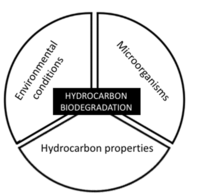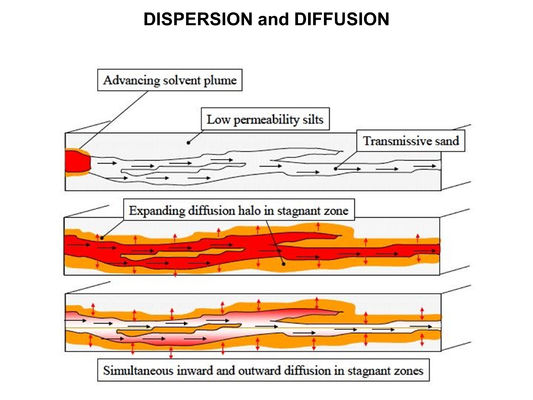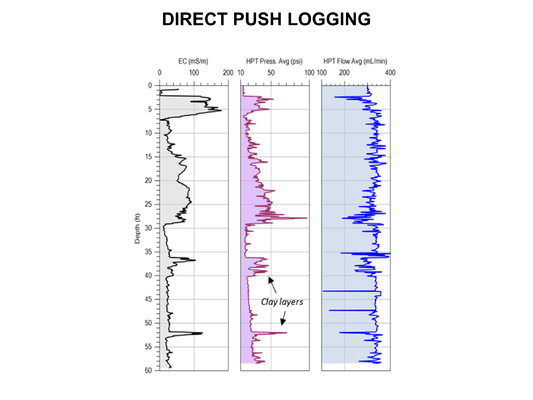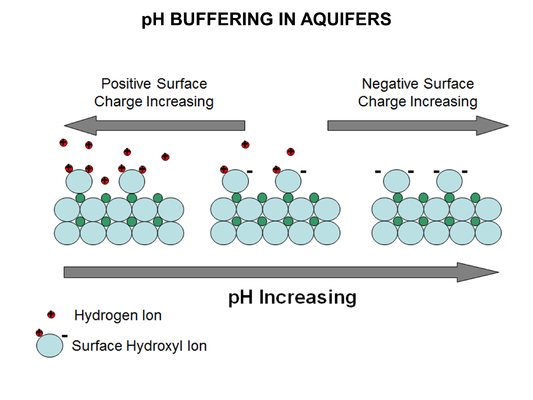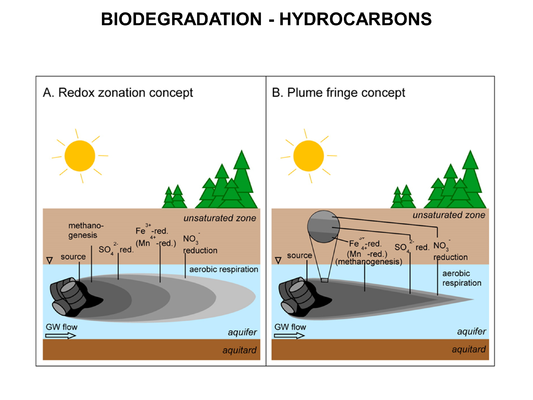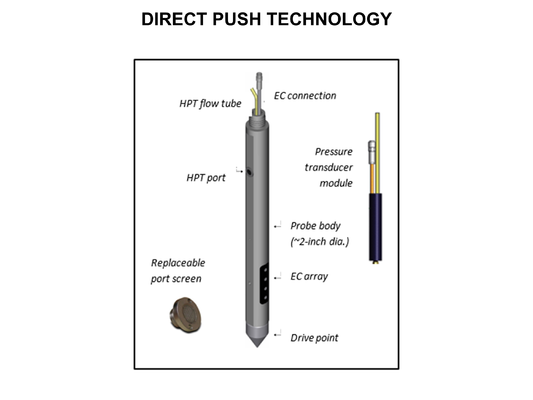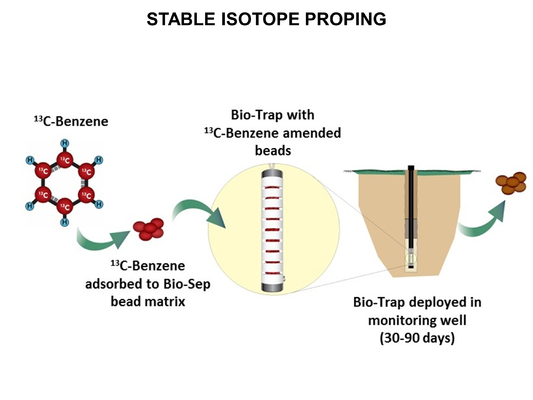Difference between revisions of "Main Page"
| Line 1: | Line 1: | ||
| − | <center><span style="font-size: | + | <center> |
| − | + | {| class="MainPageBG" style="margin: auto; width: 95%; border-spacing:0px;" | |
| − | <span style="font-size: | + | |<center><span style="font-size:350%; line-height: 0.4em; vertical-align:top;"><span style="color:#008566">Welcome to '''ENVIRO'''</span> <span style="color:#762a87">'''Wiki'''</span></span></center> |
| − | + | | | |
| − | | style=" | + | |- |
| + | | style="width:60%;" |<center><span style="font-size:180%; color:#008566; line-height: 0.4em; vertical-align:top;"> Extensive Peer Review. Readily Accessible. Written By Experts</span></center> | ||
| + | | style="width:45%;" |<center><span style="font-size:110%;"> ''Developed and brought to you by '' <br>[[File:MainLogo-serdp-estcp.png|link=https://www.serdp-estcp.org |frameless|center|350px]]</span></center> | ||
| + | |- | ||
| + | | <span style="line-height: 0.4em;"> Enviro Wiki aims to be the '''''go-to website''''' for environmental information. US environmental programs such as the ''Strategic Environmental Research and Development Program'' (SERDP) and ''Environmental Security Technology Certification Program'' (ESTCP) fund cutting-edge environmental research projects. Here, articles written by invited experts (see [[:Category:Contributors|Contributors]]) and edited by leaders in this field (see [[:Category:Contributors|Editors]]) aim to introduce and summarize current knowledge for environmental project professionals on an array of topics, with cross-linked references to reports and technical literature. </span> | ||
| + | |<center><span style="font-size:120%">''Your Environmental Information Gateway ''</span></center> | ||
| + | <inputbox> type=fulltext | ||
| + | break=no </inputbox> | ||
|} | |} | ||
| + | </center> | ||
| + | <br /> | ||
| − | {| id="mp-upper" style="width: | + | {| role="presentation" id="mp-upper" style="margin: auto; width: 95%; margin-top:3px; border-spacing: 0px; " |
| + | <!-- TODAY'S FEATURED ARTICLE --> | ||
| + | | id="mp-left" class="MainPageBG" style="width:60%; padding:0; vertical-align:top; color:#000;" | | ||
| + | <h2 id="mp-tfa-h2" style="margin:0.5em; background:#cef2e0; font-family:inherit; font-size:120%; font-weight:bold; border:1px solid #a3bfb1; color:#000; padding:0.2em 0.4em;">Featured article / Biodegradation - Hydrocarbons</h2> | ||
| + | <div id="mp-tfa" style="padding:0.0em 0.5em;">[[File:Edwards Article 1-figure 1.PNG|200 px|left|]]<dailyfeaturedpage> </dailyfeaturedpage></br> | ||
| + | [[Biodegradation - Hydrocarbons|(Full article...)]]</div> | ||
| + | |||
| + | | style="border:1px solid transparent;" | | ||
| + | |||
| + | <!-- Enviro WIKI Highlight --> | ||
| + | | id="mp-right" class="MainPageBG" style="width:40%; padding:0; horizontal-align:center; vertical-align:top;" | | ||
| + | <h2 id="mp-itn-h2" style="margin:0.5em; background:#cedff2; font-family:inherit; font-size:120%; font-weight:bold; border:1px solid #a3b0bf; color:#000; padding:0.2em 0.4em;">Enviro Wiki Highlights</h2> | ||
| + | <div id="mp-itn" style="padding:0.0em 0.5em;"> | ||
| + | |||
| + | <slideshow sequence="random" transition="fade" refresh="10000"> | ||
| + | |||
| + | [[File:WH Picture1.PNG|thumb|center|x400px|link=Dispersion and Diffusion|Molecular diffusion slowly transports solutes into clay-rich, lower permeability zones<br/><br/><br/><br/>]] | ||
| + | |||
| + | [[File:WH Picture2.PNG|thumb|center|x400px|link=Subgrade Biogeochemical Reactor (SBGR)|Typical subgrade biogeochemical reactor (SBGR) layout. The SBGR is an in situ remediation technology for treatment of contaminated source areas and groundwater plume hot spots<br/><br/><br/>]] | ||
| + | |||
| + | [[File:WH Picture3.PNG|thumb|center|x400px|link=Direct Push Logging|An Hydraulic Profiling Tool (HPT) log with electrical conductivity (EC) on left, injection pressure in middle, and flow rate on the right<br/><br/><br/>]] | ||
| + | |||
| + | [[File:WH Picture4.PNG|thumb|center|x400px|link=PH Buffering in Aquifers|Diagram of mineral surface exchanging hydrogen ions with varying pH. The surface of most aquifer minerals carries an electrical charge that varies with pH<br/><br/><br/>]] | ||
| + | |||
| + | [[File:WH Picture5.PNG|thumb|center|x400px|link=Biodegradation - Hydrocarbons|Comparison of the longitudinal redox zonation concept (A) and the plume fringe concept (B). Both concepts describe the spatial distribution of electron acceptors and respiration processes in a hydrocarbon contaminant plume<br/><br/>]] | ||
| + | |||
| + | [[File:WH Picture6.PNG|thumb|center|x400px|link=Direct Push Logging|Schematic of an Hydraulic Profiling Tool (HPT) probe. HPT were developed to better understand formation permeability and the distribution of permeable and low permeability zones in unconsolidated formations<br/><br/>]] | ||
| + | |||
| + | [[File:WH Picture7.PNG|thumb|center|x400px|link=Chemical Oxidation Design Considerations(In Situ - ISCO)|In situ chemical oxidation using (a) direct-push injection probes or (b) well-to-well flushing to delivery oxidants (shown in blue) into a target treatment zone of groundwater contaminated by dense nonaqueous phase liquid compounds (shown in red)<br/><br/>]] | ||
| + | |||
| + | [[File:WH Picture8.PNG|thumb|center|x400px|link=Geophysical Methods - Case_Studies|High-resolution 3D cross-borehole electrical imaging of contaminated fractured rock at the former Naval Air Warfare Center in New Jersey. Cross-borehole resistivity tomography imaging is a geophysical technique that can be used for site characterization and monitoring by observing variations in the electrical properties of subsurface materials]] | ||
| + | |||
| + | [[File:WH Picture9.PNG|thumb|center|x400px|link=Stable_Isotope_Probing_(SIP)|Stable isotope probing (SIP) in use: Loading, deployment and recovery of Bio-Trap® passive sampler with 13C-labeled benzene. Stable isotope probing (SIP) is used to conclusively determine whether in situ biodegradation of a contaminant is occurring<br/><br/>]] | ||
| + | |||
| + | [[File:WH Picture10.PNG|thumb|center|x400px|link=1,2,3-Trichloropropane|Summary of anticipated, primary reaction pathways for degradation of 1,2,3-Trichloropropane (TCP). TCP is a man-made chemical that was used in the past primarily as a solvent and extractive agent, a paint and varnish remover, and as a cleaning and degreasing agent<br/><br/>]] | ||
| + | |||
| + | [[File:WH Picture11.PNG|thumb|center|x400px|link=Monitored Natural Attenuation (MNA) of Fuels|Distribution of BTEX plume lengths from 604 hydrocarbon sites. Monitored Natural Attenuation (MNA) is one of the most commonly used remediation approaches for groundwater contaminated with petroleum hydrocarbons (PHCs) and certain fuel additives such as fuel oxygenates or lead scavengers]] | ||
| + | |||
| + | [[File:WH Picture12.PNG|thumb|center|x400px|link=Groundwater Sampling - No-Purge/Passive|No-purge and passive sampling methods eliminate the pre-purging step for groundwater sample collection and represent alternatives to conventional sampling methods that rely on low-flow purging of a well prior to collection. The Snap SamplerTM is an example of a passive grab sampler]] | ||
| + | |||
| + | [[File:WH Picture13.PNG|thumb|center|x400px|link=Natural Source Zone Depletion (NSZD)|Conceptualization of Vapor Transport-related Natural Source Zone Depletion (NSZD) processes at a Petroleum Release Site<br/><br/><br/>]] | ||
| + | |||
| + | [[File:WH Picture14.PNG|thumb|center|x400px|link=Soil Vapor Extraction (SVE)|Conceptual diagram of basic Soil Vapor Extraction (SVE) system for vadose zone remediation. (SVE) is a common and typically effective physical treatment process for remediation of volatile contaminants in vadose zone (unsaturated) soils<br/><br/>]] | ||
| + | |||
| + | [[File:WH Picture15.PNG|thumb|center|x400px|link=Emulsified Vegetable Oil (EVO) for Anaerobic Bioremediation|Emulsified Vegetable Oil (EVO) mixed in field during early pilot test. EVO is commonly added as a slowly fermentable substrate to stimulate the in situ anaerobic bioremediation of chlorinated solvents, explosives, perchlorate, chromate, and other contaminants<br/><br/>]] | ||
| + | </slideshow></div> | ||
| + | |} | ||
| + | |||
| + | {| id="mp-upper" style="width: 95%; margin:3px 0 0 0; " | ||
| class="MainPageBG" style="width:50%; background:#f5faff; vertical-align:top; color:#000;" | | | class="MainPageBG" style="width:50%; background:#f5faff; vertical-align:top; color:#000;" | | ||
{| id="mp-left" style="width:100%; vertical-align:top; background:#f9f9f9;" | {| id="mp-left" style="width:100%; vertical-align:top; background:#f9f9f9;" | ||
| − | | style="padding:2px;" | <h2 id="mp-tfa- | + | | style="padding:2px;" |<h2 id="mp-tfa-h2_2" style="margin:3px; background:#cef2e0; font-family:inherit; font-size:120%; font-weight:bold; border:1px solid #a3bfb1; text-align:center; color:#000; padding:0.2em 0.4em;">Table of Contents <span style="font-size:85%; font-weight:bold;"></span></h2> |
{| style="width:100%; vertical-align:top; " | {| style="width:100%; vertical-align:top; " | ||
Revision as of 13:34, 4 January 2019
| Enviro Wiki aims to be the go-to website for environmental information. US environmental programs such as the Strategic Environmental Research and Development Program (SERDP) and Environmental Security Technology Certification Program (ESTCP) fund cutting-edge environmental research projects. Here, articles written by invited experts (see Contributors) and edited by leaders in this field (see Editors) aim to introduce and summarize current knowledge for environmental project professionals on an array of topics, with cross-linked references to reports and technical literature. |
Featured article / Biodegradation - HydrocarbonsThe use of aqueous film-forming foam (AFFF) can release PFAS into the environment during fire training, an emergency response, or as a result of leaks or spills from AFFF systems. Following AFFF releases, perfluoroalkyl acids (PFAAs), particularly PFOS, PFOA, and PFHxS, tend to be the most commonly detected PFAS in environmental media. PFAAs are relatively water-soluble and mobile in the environment, are not volatile (i.e., they do not evaporate to the atmosphere readily) and can sorb to the organic carbon present in soil or sediment. PFAS can bioaccumulate in animals and plants, and persistent PFAS, such as PFCAs and PFSAs, do not undergo significant biodegradation or biotransformation once present in a biological system. The human health issues associated with PFAS AFFF sites are primarily the exposure pathways associated with drinking water ingestion and dietary intake of PFAS. The characterization of toxicological effects in human health risk assessments is based on toxicological studies of mammalian exposures to per- and polyfluoroalkyl substances (PFAS), primarily studies involving perfluorooctanesulfonic acid (PFOS) and perfluorooctanoic acid (PFOA). The most sensitive noncancer adverse effects involve the liver and kidney, immune system, and various developmental and reproductive endpoints. Only PFOS and PFOA (and their derivatives) have sufficient data for USEPA to characterize as Likely to Be Carcinogenic to Humans via the oral route of exposure. Epidemiological studies provided evidence of bladder, prostate, liver, kidney, and breast cancers in humans related to PFOS exposure, as well as kidney and testicular cancer in humans and limited evidence of breast cancer related to PFOA exposure.
(Full article...) |
Enviro Wiki Highlights |

